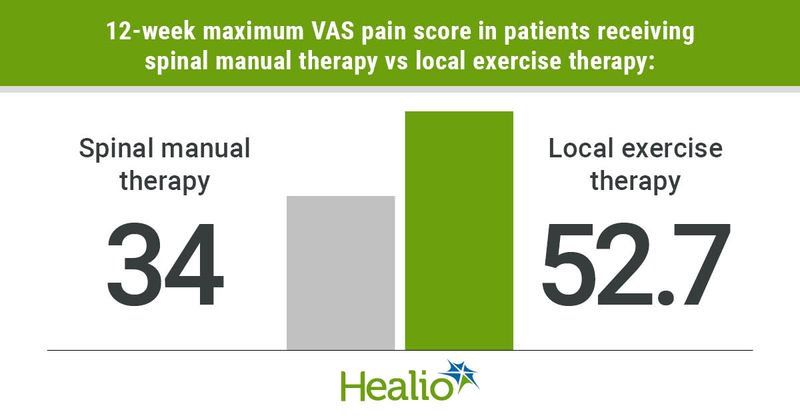Spinal manipulation therapy relieves pain in patients with patellofemoral pain
Compared with local exercise therapy, hands-on spinal manipulation therapy is more effective in improving knee pain and function in patients with patellofemoral pain syndrome, according to published results.
In a randomized controlled trial, researchers compared knee pain, function and maximum voluntary peak force (MVPF) velocity of the quadriceps in 18 patients with patellofemoral pain syndrome (PFPS) who received local exercise therapy and 25 patients with PFPS who received spinal manual therapy.

According to the study, local exercise therapy consisted of six sessions of supervised training of the knee and hip muscles with mobilization of the patellofemoral joint. The spinal manual therapy group consisted of six sessions of high-velocity, low-thrust manipulations at the thoracolumbar region, sacroiliac joint and hip. Additionally, patients were asked to do exercises at home. Patients were assessed before intervention, after 6 weeks of intervention and after 6 weeks of follow-up. Pain was measured with the VAS pain scale; function was measured with the anterior knee pain scale (AKPS) and MPFV was recorded using a Biodex System 3 dynamometer, according to the study.
Overall, researchers found pain scores and function improved more following spinal manual therapy than local exercise therapy. At final follow-up, the local exercise therapy group had a maximum pain score of 52.7 and a AKPS of 87.1, while the spinal manual therapy group had a maximum pain score of 34 and a AKPS of 75.6.
“This study suggests that spinal manual therapy is more effective than local exercise therapy in improving pain and function in patients with PFPS in the medium term,” the researchers wrote in the study. “We suggest for future research to investigate whether combining local exercise therapy and spinal manual therapy is more effective than either single intervention on its own.”


